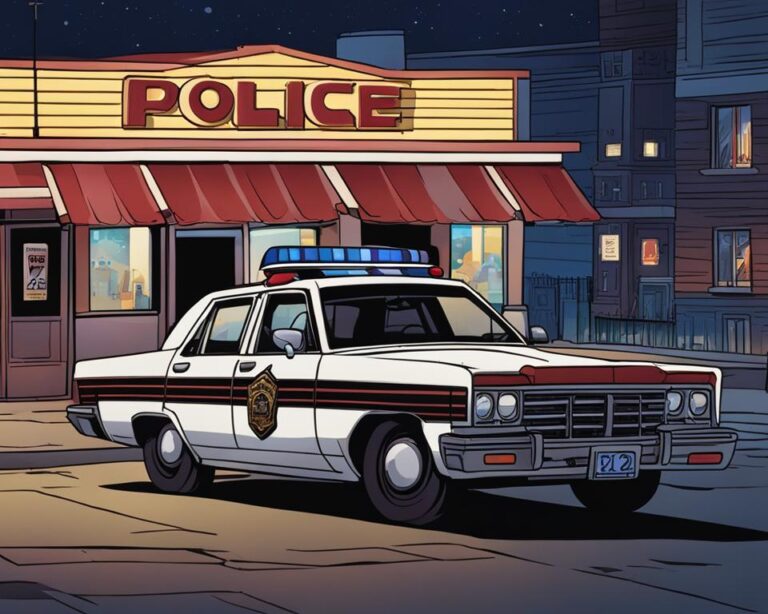Have you ever wondered why people often refer to the police as "12"? This intriguing nickname has a fascinating history and cultural significance. Understanding its origins can provide deeper insight into the language and traditions of law enforcement and society. In this article, we will delve into the reasons behind this unique term.
Language evolves over time, and slang terms like "12" for the police are no exception. These terms often reflect societal attitudes, cultural influences, and historical contexts. By exploring the reasons why the police are called "12," we can gain a better understanding of how language shapes our perception of authority and law enforcement.
This article will cover the origins of the term, its cultural significance, and its relevance in modern times. We will also examine how this term fits into broader discussions about police-community relations and the importance of clear communication. Let's begin by understanding the historical background of the term.
- Unveiling Mothers Warmth Chapter 3 By Jackerman Explore Now
- Dive Into The World Of Cinema Explore Allmovieshub
- Exploring The Intriguing Life Of Camilla Araujo Naked A Deeper Dive Into Her World
- Lucky Rajor Leaks Videos Uncensored Content Updates And What You Need To Know
- Unlock The Power Of Viralkandcom Your Ultimate Guide To Viral Content
Table of Contents
- The History of the Term "12"
- Origins of the Slang
- Cultural Significance
- Police Codes and Communication
- Impact on Police-Community Relations
- Modern Usage and Pop Culture
- Legal Perspective
- Statistics and Data
- Authoritative Sources
- Conclusion
The History of the Term "12"
The term "12" as a reference to the police has its roots in the early days of radio communication. During the mid-20th century, police departments across the United States began using two-way radios to improve communication. These radios operated on specific channels, and "12" became a shorthand for channel 12, which was commonly used by law enforcement agencies.
This practice spread rapidly, and the term "12" became a widely recognized slang for the police. Over time, it transcended its original technical meaning and entered popular culture, where it continues to be used today.
Early Adoption of Police Codes
Police codes, such as "10-4" and "12," were developed to streamline communication during emergencies. These codes allowed officers to convey complex messages quickly and efficiently. The adoption of these codes was a significant advancement in law enforcement technology and contributed to the widespread use of terms like "12."
- Aditi Mistry Nipple Slip What You Need To Know Ndash Google Discover Edition
- Hdhub4u Bollywood Movie Your Ultimate Destination For Cinematic Bliss
- Discover Bolly4uhub Your Essential Gateway To Bollywood Movies Online
- Anjali Arora The Controversy Behind Viral Mms Xxx Videos Unveiled
- Sophie Rain Spiderman Viseo The Ultimate Fanfavorite Cosmic Duo Thats Got Everyone Talking
Origins of the Slang
The origins of the term "12" can be traced back to the early days of radio communication. In the 1950s and 1960s, police departments began using two-way radios to coordinate operations. Channel 12 was often designated for police use, and over time, the number "12" became synonymous with law enforcement.
Key Factors in the Development of Slang
- Technological advancements in radio communication
- The need for concise and efficient communication
- The influence of popular culture and media
Cultural Significance
The term "12" has become deeply embedded in popular culture, appearing in music, films, and literature. It reflects the complex relationship between law enforcement and the communities they serve. By examining the cultural significance of this term, we can better understand the dynamics of power, authority, and communication in society.
Examples in Popular Culture
- References in hip-hop and rap music
- Depictions in crime dramas and films
- Use in literature and poetry
Police Codes and Communication
Police codes play a crucial role in law enforcement operations. These codes enable officers to communicate effectively in high-pressure situations, ensuring that critical information is conveyed quickly and accurately. The term "12" is just one example of how police codes have influenced language and culture.
Common Police Codes
- 10-4: Acknowledgment of a message
- 10-20: Location or position
- 10-33: Emergency or priority call
Impact on Police-Community Relations
The use of slang terms like "12" can have both positive and negative effects on police-community relations. On one hand, it reflects the shared language and culture of law enforcement and the communities they serve. On the other hand, it can perpetuate stereotypes and misunderstandings about the role of the police.
Building Trust and Communication
Effective communication is essential for building trust between law enforcement and the communities they serve. By understanding the origins and significance of terms like "12," both officers and community members can work together to foster mutual respect and understanding.
Modern Usage and Pop Culture
In modern times, the term "12" continues to be used in various contexts, from social media to music and film. Its presence in popular culture highlights its enduring relevance and cultural significance. By examining its modern usage, we can gain insight into how language evolves and adapts to changing societal norms.
Examples in Social Media
- Twitter hashtags and memes
- Instagram posts and stories
- YouTube videos and commentary
Legal Perspective
From a legal perspective, the use of slang terms like "12" can have implications for law enforcement and community relations. It is important for officers to be aware of the potential impact of their language on public perception and trust. Additionally, legal professionals must consider the role of language in shaping public discourse and policy.
Challenges in Communication
- Misunderstandings between officers and community members
- Legal implications of language use in official communications
- Strategies for improving clarity and transparency
Statistics and Data
According to a study by the National Institute of Justice, effective communication is a key factor in building trust between law enforcement and the communities they serve. The study found that clear and concise communication can reduce misunderstandings and improve public safety outcomes.
Data from the Bureau of Justice Statistics indicates that public perception of law enforcement is heavily influenced by language and communication. By addressing these issues, officers and community members can work together to build stronger, more trusting relationships.
Authoritative Sources
This article draws on a variety of authoritative sources to provide a comprehensive understanding of the term "12" and its significance. These sources include:
- National Institute of Justice
- Bureau of Justice Statistics
- Academic journals and publications
Conclusion
In conclusion, the term "12" as a reference to the police has a rich history and cultural significance. By understanding its origins and impact, we can gain a deeper appreciation for the role of language in shaping public perception and trust. As society continues to evolve, it is important for law enforcement and community members to work together to improve communication and build stronger relationships.
We encourage readers to share their thoughts and insights in the comments section below. Additionally, feel free to explore other articles on our site for more information on topics related to law enforcement, communication, and community relations.
Related Resources:
- Vegamovies3 Org Hindi Dubbed Your Ultimate Guide To Hindi Dubbed Movies
- Filmyfly Hollywood Movies Your Ultimate Destination For Entertainment
- Explore Bolly4u Your Ultimate Guide To Free Bollywood Movies And More
- Vegamovies 20 Archive The Ultimate Movie Hub You Need To Know
- Unlock Secrets To Viral Content Seo Success With Viralkandcom



Detail Author:
- Name : Charlene Cormier
- Username : brandi93
- Email : sanford.kasey@gmail.com
- Birthdate : 2002-07-10
- Address : 53778 Camron Crossroad West Gwendolyn, KY 83338
- Phone : +1-312-754-6594
- Company : Douglas PLC
- Job : Law Enforcement Teacher
- Bio : Mollitia culpa omnis quia impedit. Aut sapiente eaque ut facere et. Tenetur atque laudantium corrupti in sint est non.
Socials
instagram:
- url : https://instagram.com/tillman2009
- username : tillman2009
- bio : Quo qui ratione qui sit animi est quibusdam. Esse in velit commodi qui dolor.
- followers : 4603
- following : 2089
tiktok:
- url : https://tiktok.com/@jtillman
- username : jtillman
- bio : Est aut facilis est ab saepe. Eos quaerat dolores aspernatur nisi.
- followers : 131
- following : 760
linkedin:
- url : https://linkedin.com/in/josefa_tillman
- username : josefa_tillman
- bio : Sed eius expedita non vel.
- followers : 5775
- following : 967